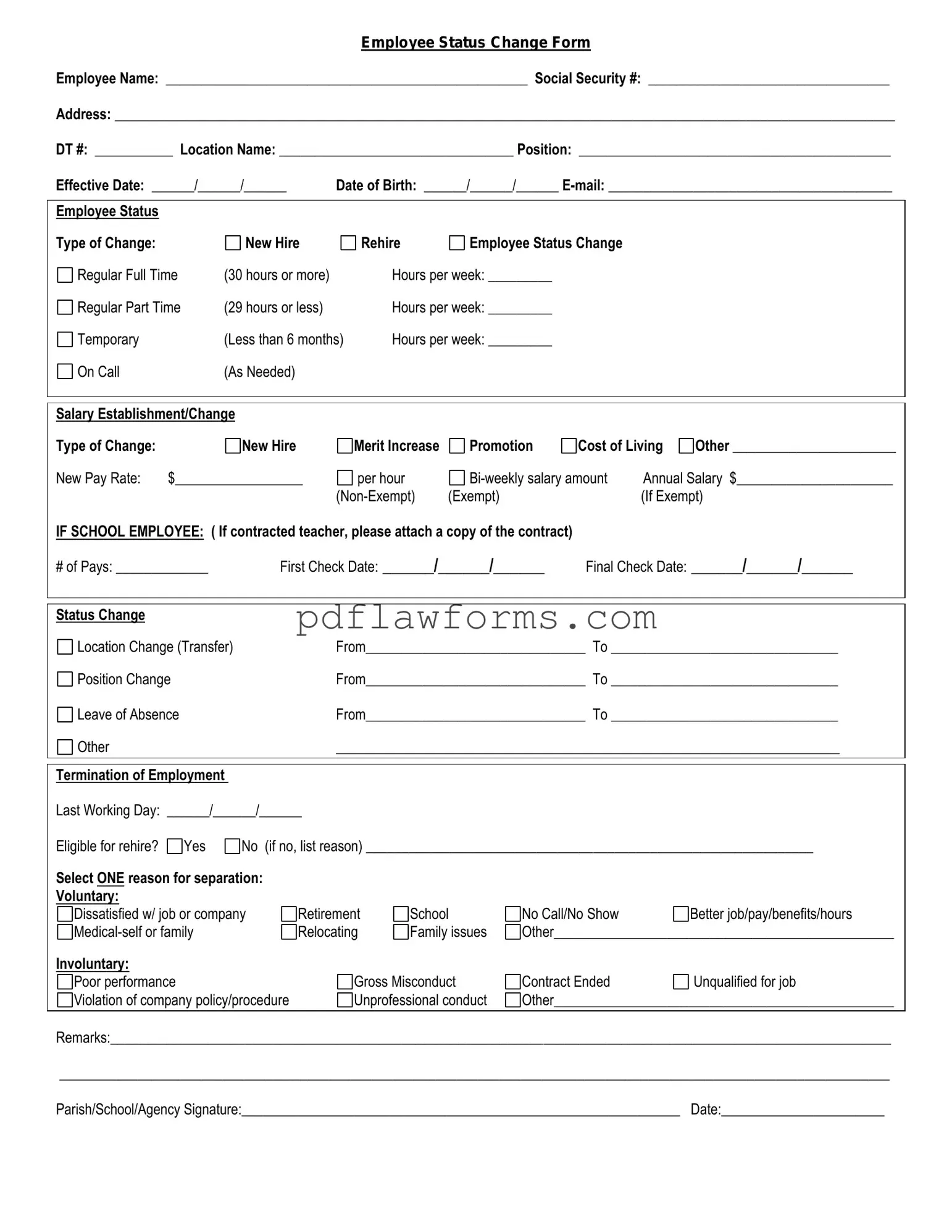Filling out the Employee Status Change form is an important task that can significantly impact an employee's records and benefits. However, many individuals make common mistakes that can lead to confusion or delays. One frequent error is not providing complete information. Leaving out essential details, such as the employee's current job title or department, can result in processing delays.
Another mistake often made is failing to update contact information. When an employee changes their status, it’s crucial to ensure that their phone number and email address are current. If these details are incorrect, it can hinder communication regarding important updates or benefits.
Some individuals forget to sign and date the form. A missing signature can render the form invalid, causing unnecessary back-and-forth communication with HR. It’s essential to double-check that all required signatures are present before submitting the form.
Inaccurate dates can also pose a problem. Employees may mistakenly enter the wrong effective date for their status change. This can lead to complications in payroll processing or benefits eligibility. Always verify that the date reflects when the change should take effect.
Another common oversight is neglecting to specify the reason for the status change. Whether it’s a promotion, transfer, or leave of absence, providing a clear reason helps HR understand the context and process the request accordingly.
Some people may also fail to attach necessary documentation. Supporting documents, such as a resignation letter or medical leave request, are often required to complete the status change. Omitting these can delay the approval process.
Relying on assumptions can lead to errors as well. For instance, some employees may think they know what information is needed based on previous forms. However, requirements can change, and it’s important to refer to the latest guidelines.
Lastly, not keeping a copy of the submitted form can be a significant mistake. Having a record of what was submitted can be invaluable if there are questions or issues later. Always retain a copy for personal records to ensure accountability and ease of reference.
